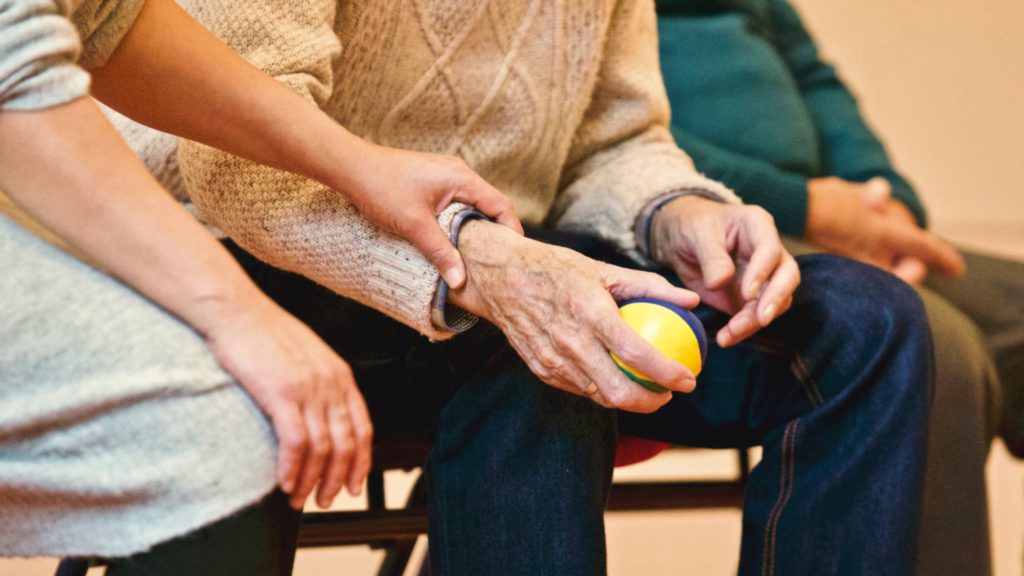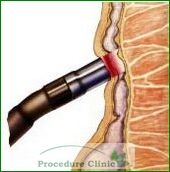Introduction
Hemorrhoids, a common ailment affecting countless individuals, can bring discomfort and disruption to daily life. Among the various treatments available, infrared coagulation (IRC) has emerged as a non-invasive and effective option for addressing hemorrhoidal symptoms. In this blog, we delve into the world of IRC, understanding its mechanism, benefits, procedure, and its role in providing gentle relief to those dealing with hemorrhoids.
Understanding Hemorrhoids
 Hemorrhoids are swollen blood vessels in the rectum or anus that can cause pain, itching, bleeding, and discomfort during bowel movements. They can be internal (inside the rectum) or external (outside the anus). Lifestyle factors, constipation, pregnancy, and genetics are common contributors to their development.
Hemorrhoids are swollen blood vessels in the rectum or anus that can cause pain, itching, bleeding, and discomfort during bowel movements. They can be internal (inside the rectum) or external (outside the anus). Lifestyle factors, constipation, pregnancy, and genetics are common contributors to their development.
The Mechanism of Infrared Coagulation
Infrared coagulation is a minimally invasive procedure designed to treat internal hemorrhoids. It operates on the principle of thermal energy application. During the procedure, a specialized device releases a burst of infrared light to the base of the hemorrhoid. This light is absorbed by the blood vessels, causing them to coagulate (clot) and shrink. As a result, the blood supply to the hemorrhoid is reduced, alleviating its symptoms.
Benefits of Infrared Coagulation
The IRC Procedure
The IRC procedure is typically as follows:
Incorporating IRC in Hemorrhoid Management
Infrared coagulation has found a significant place in the realm of hemorrhoid management. It offers a middle ground between conservative treatments (such as dietary changes and topical medications) and surgical interventions (like hemorrhoidectomy). For individuals seeking a less invasive solution with quick recovery, IRC can be a viable choice.
Conclusion
Hemorrhoids need not be a source of constant discomfort and disruption in one’s life. Infrared coagulation offers a ray of hope, providing a gentle and effective way to address the symptoms of internal hemorrhoids. As medical techniques continue to evolve, IRC stands as a testament to the ability of modern medicine to provide relief without the need for invasive surgeries. If you’re dealing with hemorrhoids, consider discussing the possibility of infrared coagulation with a healthcare professional to determine if it’s the right solution for you.
Note: One Stop Medical Center provides the service of hemorrhoid care. We have two office locations in Edina, Minnesota, and Casselberry, Florida. If you are interested in hemorrhoid care, Please fill out the online registration first, we will call you in 2 business days, or please call us at 1-888-992-0019 if any questions.
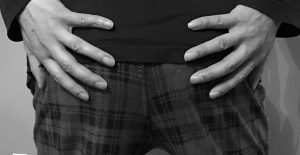 As the venous complex of an internal hemorrhoid becomes varicose and continues to enlarge, it bulges into the anal canal and loses its normal anchoring, becoming a prolapsing internal hemorrhoid. The prolapsing hemorrhoid usually returns into the anal canal or rectum on its own, or can be pushed back inside using one’s finger, but usually prolapses again after the next bowel movement. In the anal canal, a hemorrhoid is exposed to movement caused by passing stool, particularly hard stools that can cause bleeding and sting pain. The painless rectal bleeding with bright red blood is a common symptom of internal hemorrhoids. The rectal mucosal lining that has been pulled down secretes mucus and moistens the anus and its surrounding skin, while the stool itself can also leak onto the anal skin. Itchiness often occurs as a result of this dual presence of stool and moisture.
As the venous complex of an internal hemorrhoid becomes varicose and continues to enlarge, it bulges into the anal canal and loses its normal anchoring, becoming a prolapsing internal hemorrhoid. The prolapsing hemorrhoid usually returns into the anal canal or rectum on its own, or can be pushed back inside using one’s finger, but usually prolapses again after the next bowel movement. In the anal canal, a hemorrhoid is exposed to movement caused by passing stool, particularly hard stools that can cause bleeding and sting pain. The painless rectal bleeding with bright red blood is a common symptom of internal hemorrhoids. The rectal mucosal lining that has been pulled down secretes mucus and moistens the anus and its surrounding skin, while the stool itself can also leak onto the anal skin. Itchiness often occurs as a result of this dual presence of stool and moisture. When hemorrhoids become inflamed, they can become painful, especially if they’re located externally. Other symptoms include anal itching, bleeding and prolapse. Unfortunately, over 10 million people suffer from inflamed hemorrhoids every year. How can something so small cause so much pain and discomfort?
When hemorrhoids become inflamed, they can become painful, especially if they’re located externally. Other symptoms include anal itching, bleeding and prolapse. Unfortunately, over 10 million people suffer from inflamed hemorrhoids every year. How can something so small cause so much pain and discomfort?
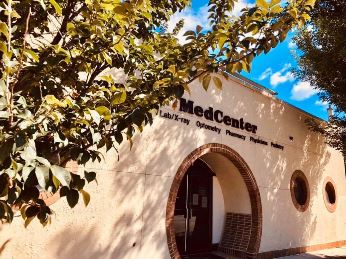
 We used to believe that hemorrhoidal bleeding is venous. Now the evidence indicates that hemorrhoidal bleeding is arterial, which is supported by the bright red color and arterial pH of the blood.
We used to believe that hemorrhoidal bleeding is venous. Now the evidence indicates that hemorrhoidal bleeding is arterial, which is supported by the bright red color and arterial pH of the blood.  When you think of medical conditions or illnesses related to Minnesotans, you may assume something along the lines of frostbite, pneumonia, dry skin, or just anything related to the state’s extremely cold winters. However, a study of the most frequently Googled health condition in every US state in the past year revealed that the Land of 10,000 Lakes is most concerned about…
When you think of medical conditions or illnesses related to Minnesotans, you may assume something along the lines of frostbite, pneumonia, dry skin, or just anything related to the state’s extremely cold winters. However, a study of the most frequently Googled health condition in every US state in the past year revealed that the Land of 10,000 Lakes is most concerned about…
 Constipation is one of the most common bowel disorders affecting American adults, with roughly 20 percent of the population suffering from hard, painful stools. Defined as having fewer than three bowel movements per week for several weeks, constipation occurs when the colon absorbs too much water from the food passing through it, creating dry stool that’s extremely difficult to pass.
Constipation is one of the most common bowel disorders affecting American adults, with roughly 20 percent of the population suffering from hard, painful stools. Defined as having fewer than three bowel movements per week for several weeks, constipation occurs when the colon absorbs too much water from the food passing through it, creating dry stool that’s extremely difficult to pass. 3. Exercise more – Being more active is always beneficial to your health! Hitting the gym or simply going for a jog outside helps aid food breakdown and reduce the time it takes food to move through the large intestine. The less time food sits in your colon, the more water it retains to help ease stool passage later.
3. Exercise more – Being more active is always beneficial to your health! Hitting the gym or simply going for a jog outside helps aid food breakdown and reduce the time it takes food to move through the large intestine. The less time food sits in your colon, the more water it retains to help ease stool passage later. Although the exact causes of skin tags are unclear, they usually result from one or more of the following:
Although the exact causes of skin tags are unclear, they usually result from one or more of the following: The average American spends over five hours per day scrolling through Instagram feeds, checking Twitter, answering emails and texts, and watching Netflix—all via smartphone devices and, more often than not, while sitting. Add in the extra layer of using these mobile devices during bathroom trips, and most of us have significantly increased our risk of developing hemorrhoids.
The average American spends over five hours per day scrolling through Instagram feeds, checking Twitter, answering emails and texts, and watching Netflix—all via smartphone devices and, more often than not, while sitting. Add in the extra layer of using these mobile devices during bathroom trips, and most of us have significantly increased our risk of developing hemorrhoids.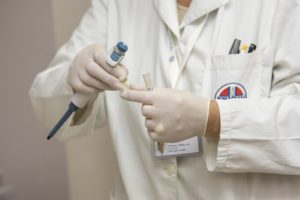 Your doctor will then insert a light-equipped device called an anoscope into your lower gastrointestinal tract via the anus. An anoscope is a small, hollow, rigid tube roughly 3-5 inches long and 2 inches wide and is usually coated with a jelly-like substance to help ease insertion. While the device is being inserted, your doctor may also ask you to clamp and relax your internal muscles to help with the placement of the anoscope.
Your doctor will then insert a light-equipped device called an anoscope into your lower gastrointestinal tract via the anus. An anoscope is a small, hollow, rigid tube roughly 3-5 inches long and 2 inches wide and is usually coated with a jelly-like substance to help ease insertion. While the device is being inserted, your doctor may also ask you to clamp and relax your internal muscles to help with the placement of the anoscope. Yes, you read that correctly—elephant foot yam is loaded with potential medicinal benefits and may even improve hemorrhoidal symptoms. This alternative medicine has long been used in Ayurveda, a traditional system of medicine rooted in the Indian subcontinent whose practices have recently been globalized. Used to treat numerous conditions such as sperm quality, liver and spleen disorders, and hemorrhages, elephant foot yam just may be the next big home remedy for treating hemorrhoids as well.
Yes, you read that correctly—elephant foot yam is loaded with potential medicinal benefits and may even improve hemorrhoidal symptoms. This alternative medicine has long been used in Ayurveda, a traditional system of medicine rooted in the Indian subcontinent whose practices have recently been globalized. Used to treat numerous conditions such as sperm quality, liver and spleen disorders, and hemorrhages, elephant foot yam just may be the next big home remedy for treating hemorrhoids as well.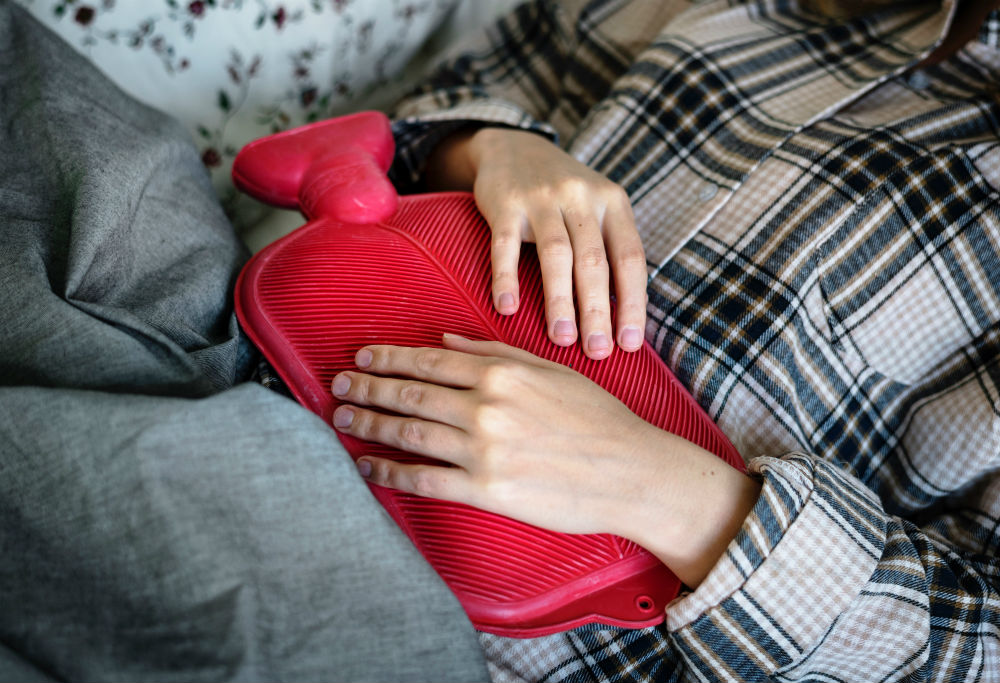 When considering
When considering 
 If you’ve ever experienced an itchy bum in the middle of the night, it’s quite an unpleasant sensation. Scratching the area may provide temporary relief, but the harshness of your nails ends up causing further irritation and damage to the already sensitive anal region.
If you’ve ever experienced an itchy bum in the middle of the night, it’s quite an unpleasant sensation. Scratching the area may provide temporary relief, but the harshness of your nails ends up causing further irritation and damage to the already sensitive anal region. Bleeding from your rectum or anus is never a pleasant experience, and it can understandably cause immediate panic. Generally, bright red blood indicates bleeding in the lower rectum, while dark red blood indicates bleeding from deeper and further up in the body. While passing dark red blood is usually a sign of digestive bleeding and requires immediate attention,
Bleeding from your rectum or anus is never a pleasant experience, and it can understandably cause immediate panic. Generally, bright red blood indicates bleeding in the lower rectum, while dark red blood indicates bleeding from deeper and further up in the body. While passing dark red blood is usually a sign of digestive bleeding and requires immediate attention,  After rubber band ligation, you’ll typically experience a bit of pain and a feeling of fullness in the lower abdomen, as well as an urge to have a bowel movement. These sensations are totally normal and usually subside within a few days. You may also experience small amounts of anal/rectal bleeding for about 7 days after procedure due to the hemorrhoid falling off. It’s encouraged to avoid physically intense activities that strain the body for at least 2-3 weeks. While some patients are able to return to regular activities immediately, others may need a couple days of downtime and bed rest.
After rubber band ligation, you’ll typically experience a bit of pain and a feeling of fullness in the lower abdomen, as well as an urge to have a bowel movement. These sensations are totally normal and usually subside within a few days. You may also experience small amounts of anal/rectal bleeding for about 7 days after procedure due to the hemorrhoid falling off. It’s encouraged to avoid physically intense activities that strain the body for at least 2-3 weeks. While some patients are able to return to regular activities immediately, others may need a couple days of downtime and bed rest. Hemorrhoids have plagued humans for thousands of years, with the earliest known mention of its symptoms dating back to roughly ~2250 BC in the kingdom of Babylon in the Code of King Hammurabi. Fast forward to 1700 BC in Egypt, and we stumble upon the first-ever recorded case of hemorrhoids, which also happened to highlight an important topical wound ointment.
Hemorrhoids have plagued humans for thousands of years, with the earliest known mention of its symptoms dating back to roughly ~2250 BC in the kingdom of Babylon in the Code of King Hammurabi. Fast forward to 1700 BC in Egypt, and we stumble upon the first-ever recorded case of hemorrhoids, which also happened to highlight an important topical wound ointment. Dealing with hemorrhoid discomfort can be a real pain (literally). In addition to visiting your doctor for a full exam,
Dealing with hemorrhoid discomfort can be a real pain (literally). In addition to visiting your doctor for a full exam,  2. Straining/overexerting yourself during workouts – If a weight is too heavy, DON’T force yourself. Suddenly increasing weight amounts too quickly puts a burst of pressure on your lower region, which is NOT what you want for your blood vessels.
2. Straining/overexerting yourself during workouts – If a weight is too heavy, DON’T force yourself. Suddenly increasing weight amounts too quickly puts a burst of pressure on your lower region, which is NOT what you want for your blood vessels. 5. Sitting for long periods of time – It’s not just excessive toilet-sitting that’s frowned upon. Sitting and binge-watching four straight hours of Keeping Up With the Kardashians will essentially produce the same negative results. Decreased mobility can cause blood flow to also decrease, and blood is more likely to gather up/pool in the anal veins, causing irritation and swelling that can develop into hemorrhoids.
5. Sitting for long periods of time – It’s not just excessive toilet-sitting that’s frowned upon. Sitting and binge-watching four straight hours of Keeping Up With the Kardashians will essentially produce the same negative results. Decreased mobility can cause blood flow to also decrease, and blood is more likely to gather up/pool in the anal veins, causing irritation and swelling that can develop into hemorrhoids.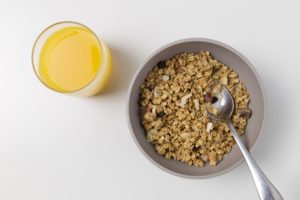

 Because the symptoms of hemorrhoids and early-stage rectal/colon cancer are very similar, people often confuse and, at times, misdiagnose the two conditions. Since the treatment method for each condition is vastly different, it’s important to know how to differentiate hemorrhoids from rectal cancer and proceed with the appropriate treatment options.
Because the symptoms of hemorrhoids and early-stage rectal/colon cancer are very similar, people often confuse and, at times, misdiagnose the two conditions. Since the treatment method for each condition is vastly different, it’s important to know how to differentiate hemorrhoids from rectal cancer and proceed with the appropriate treatment options.